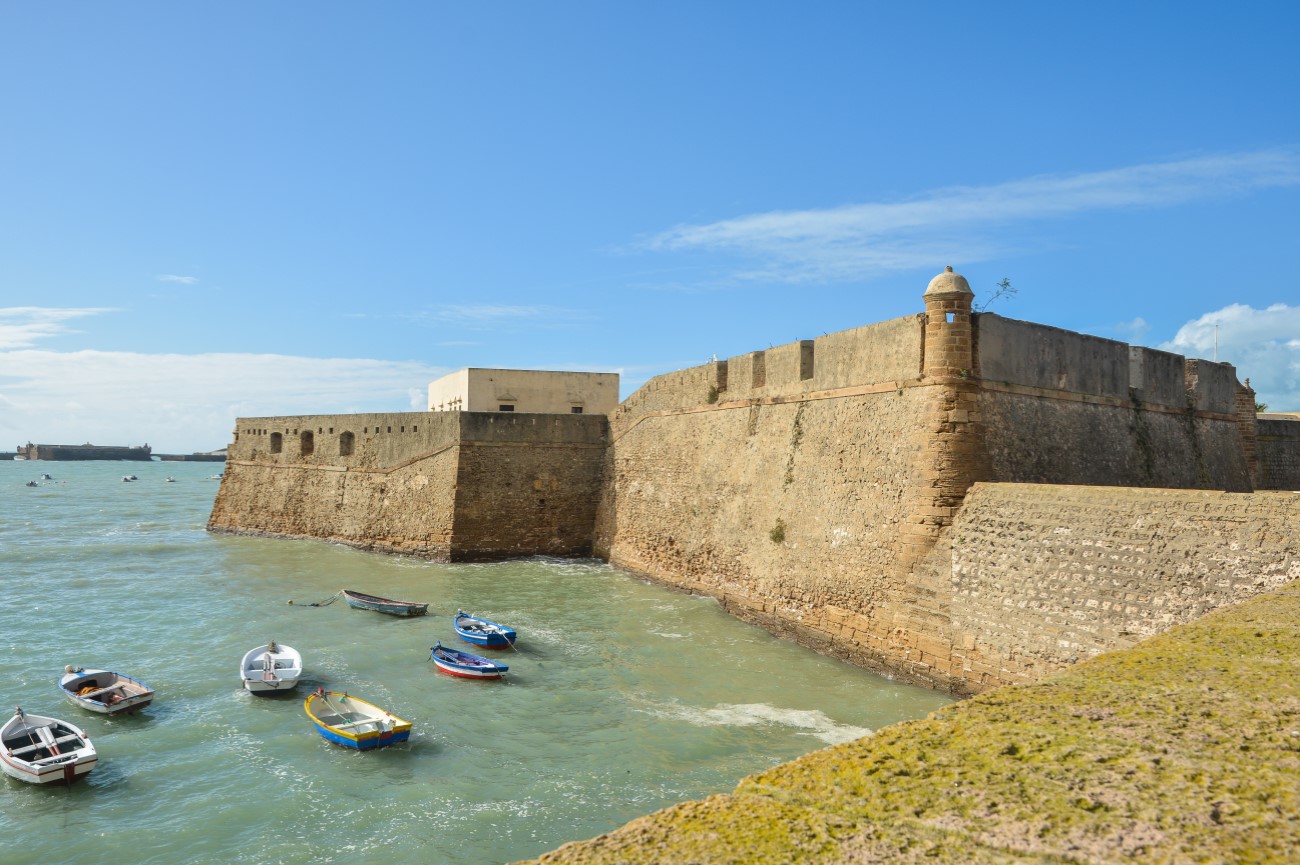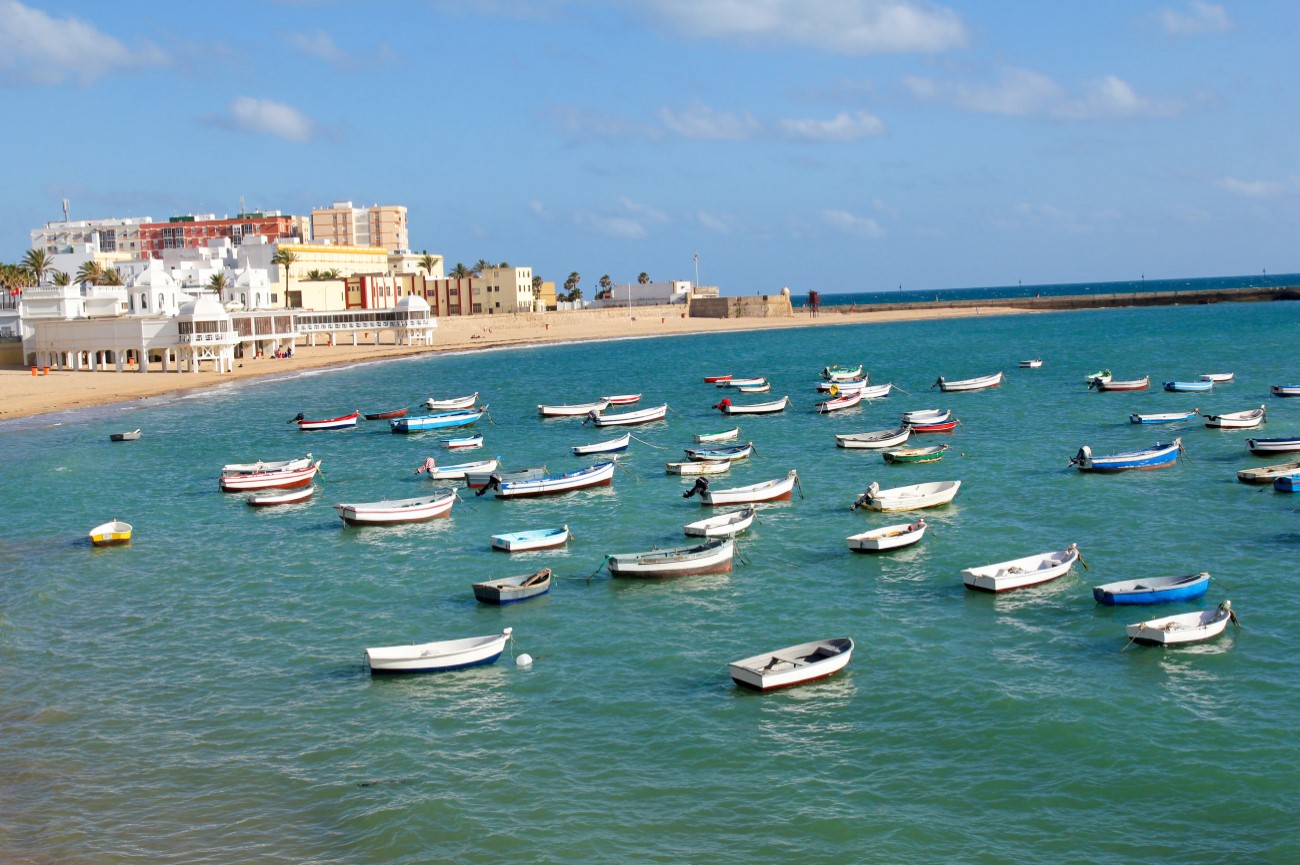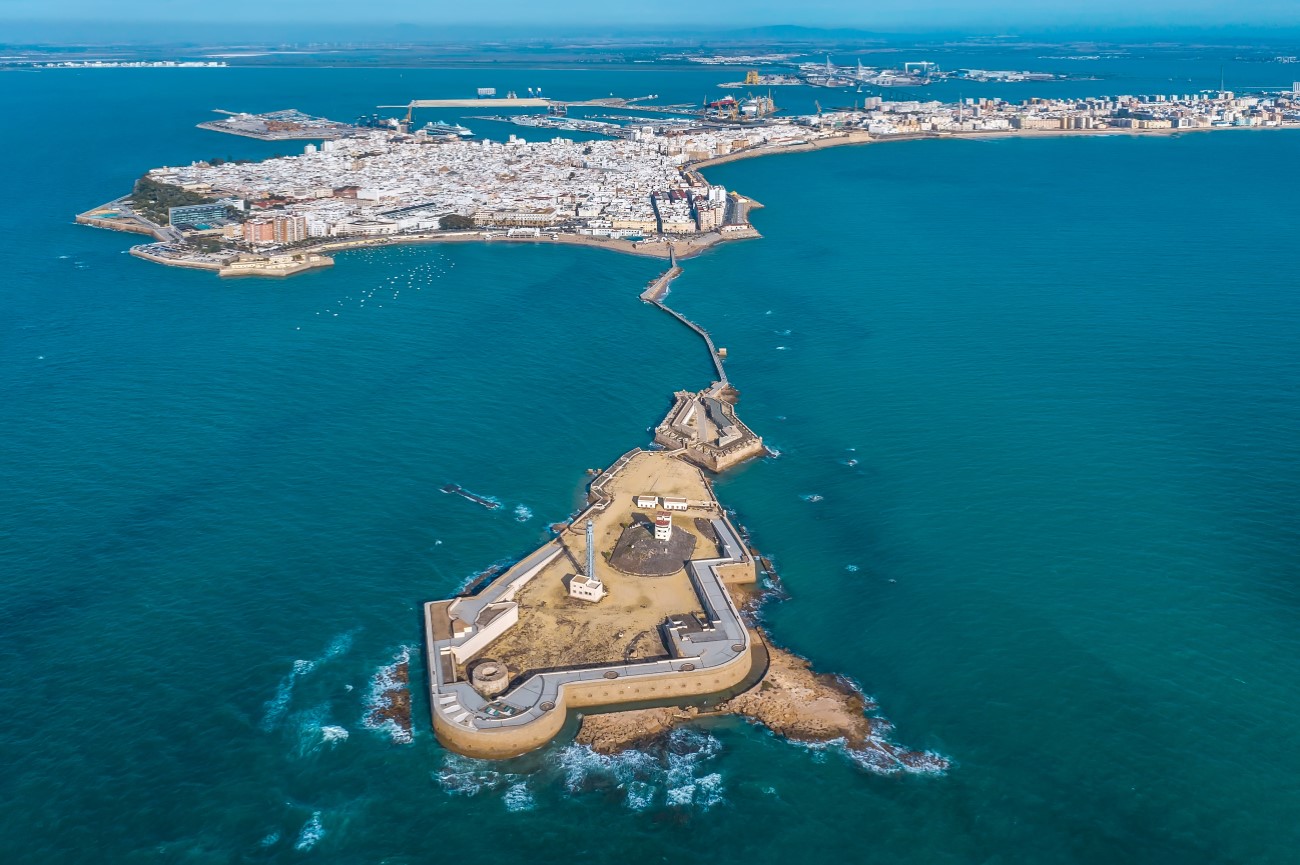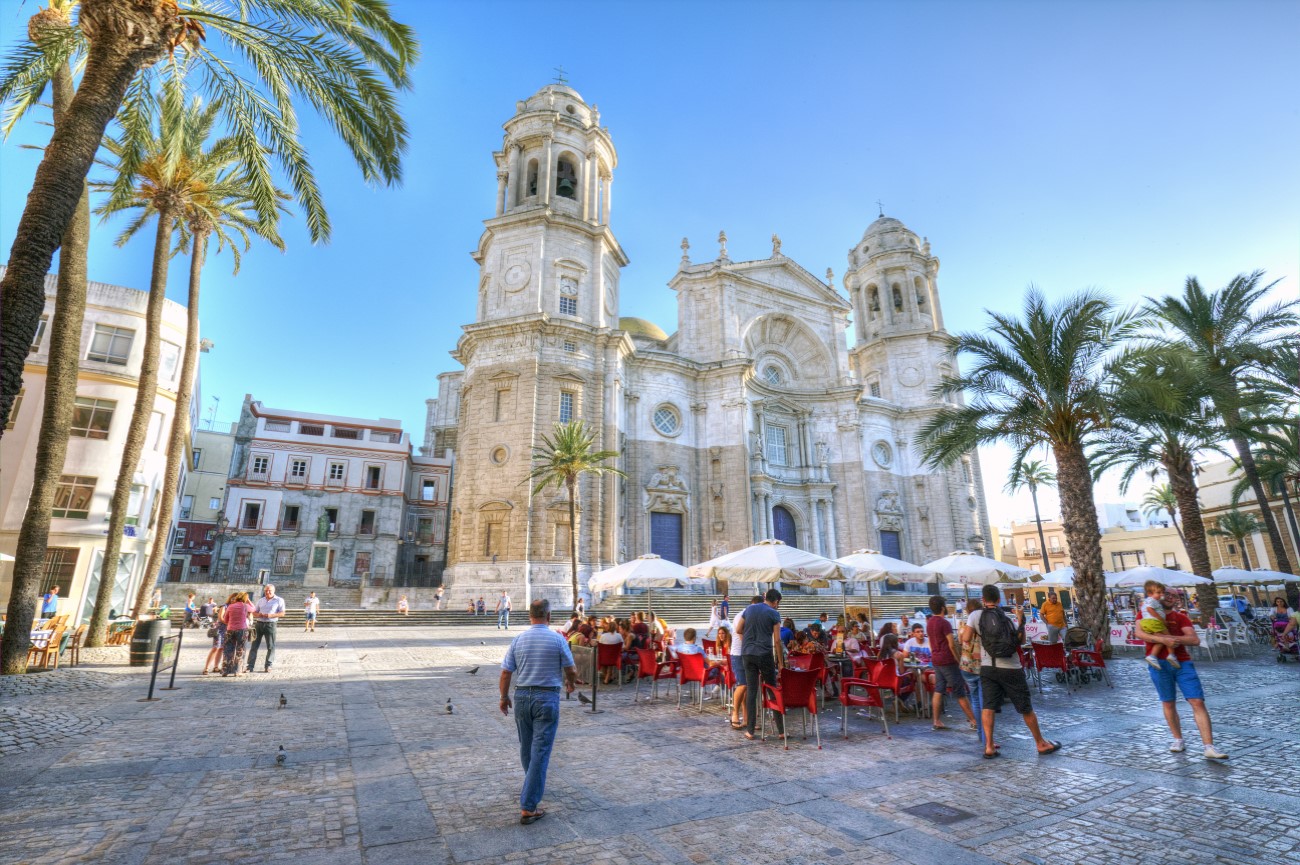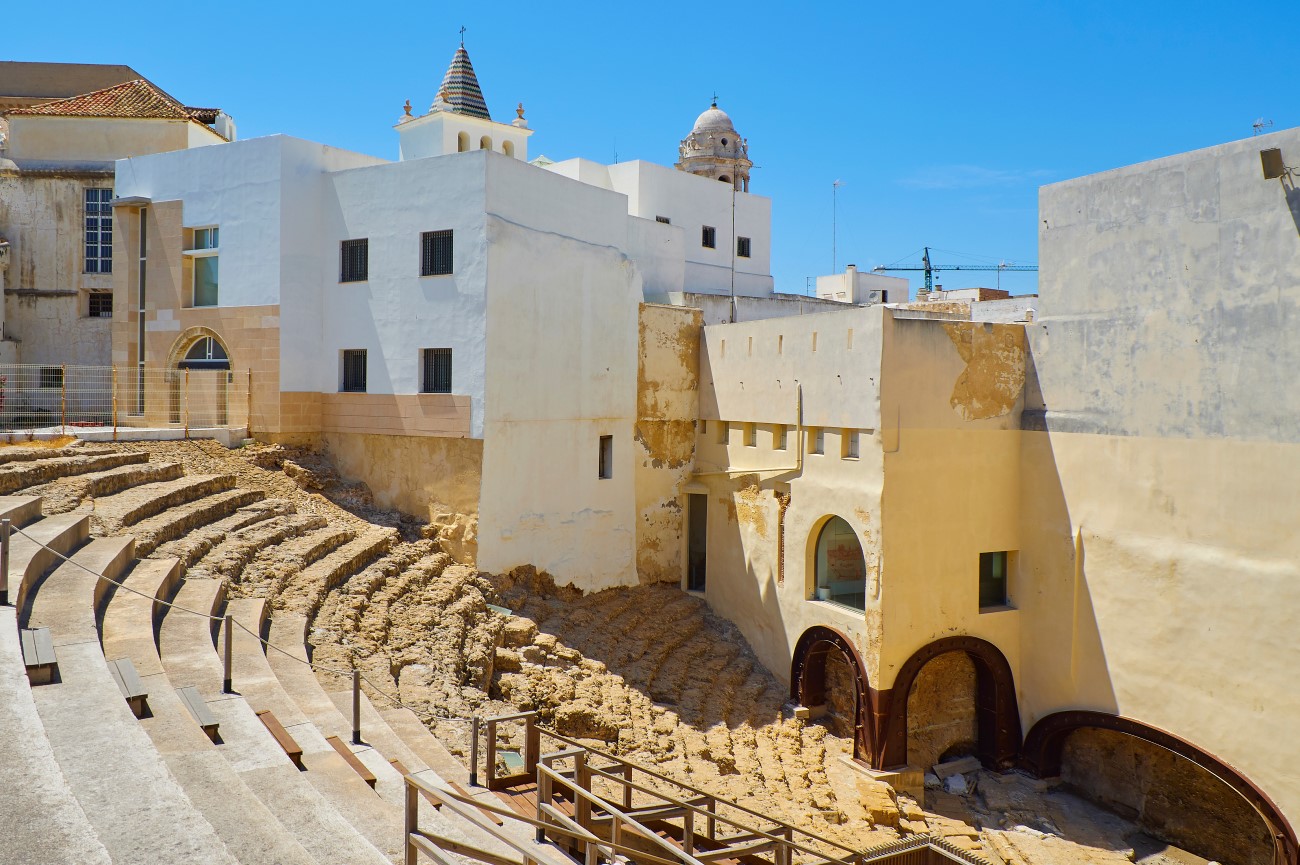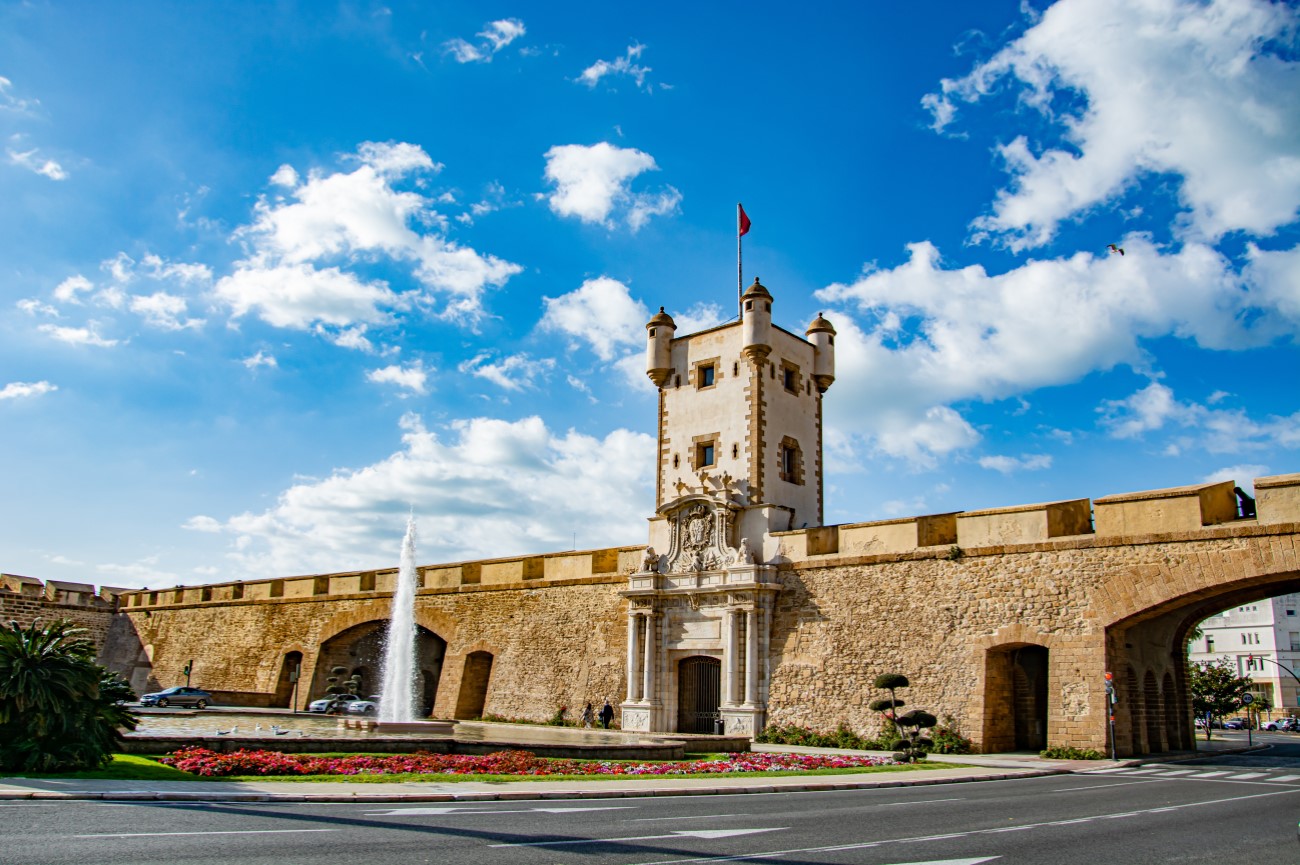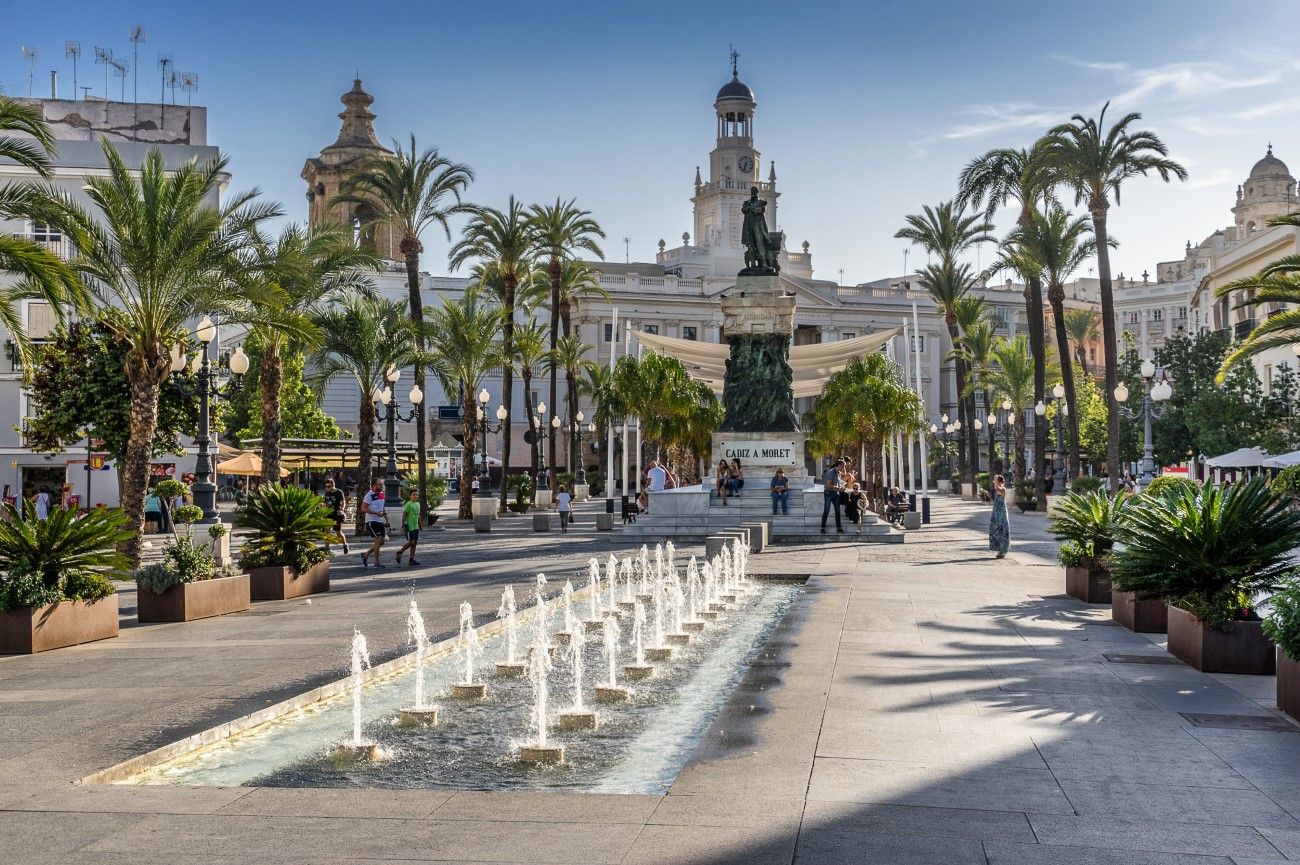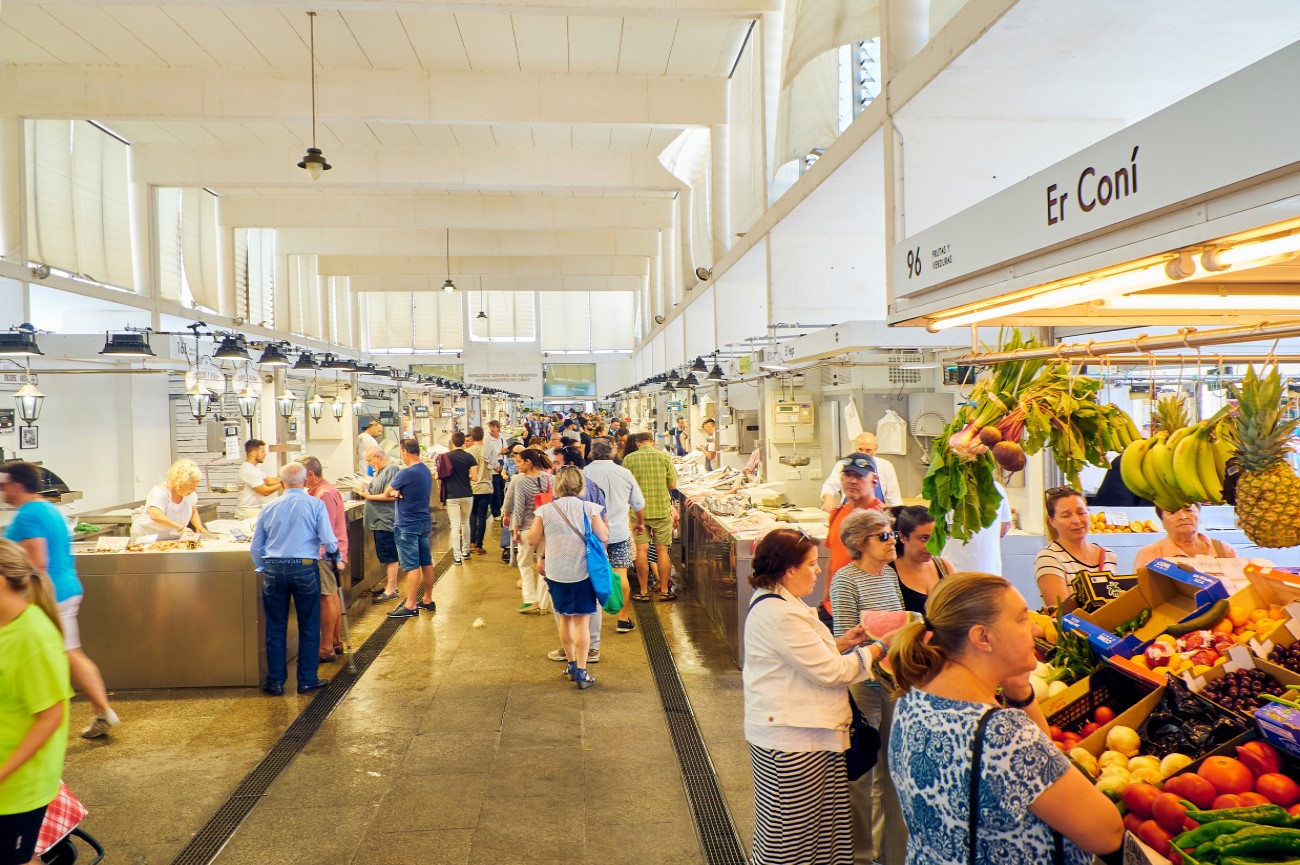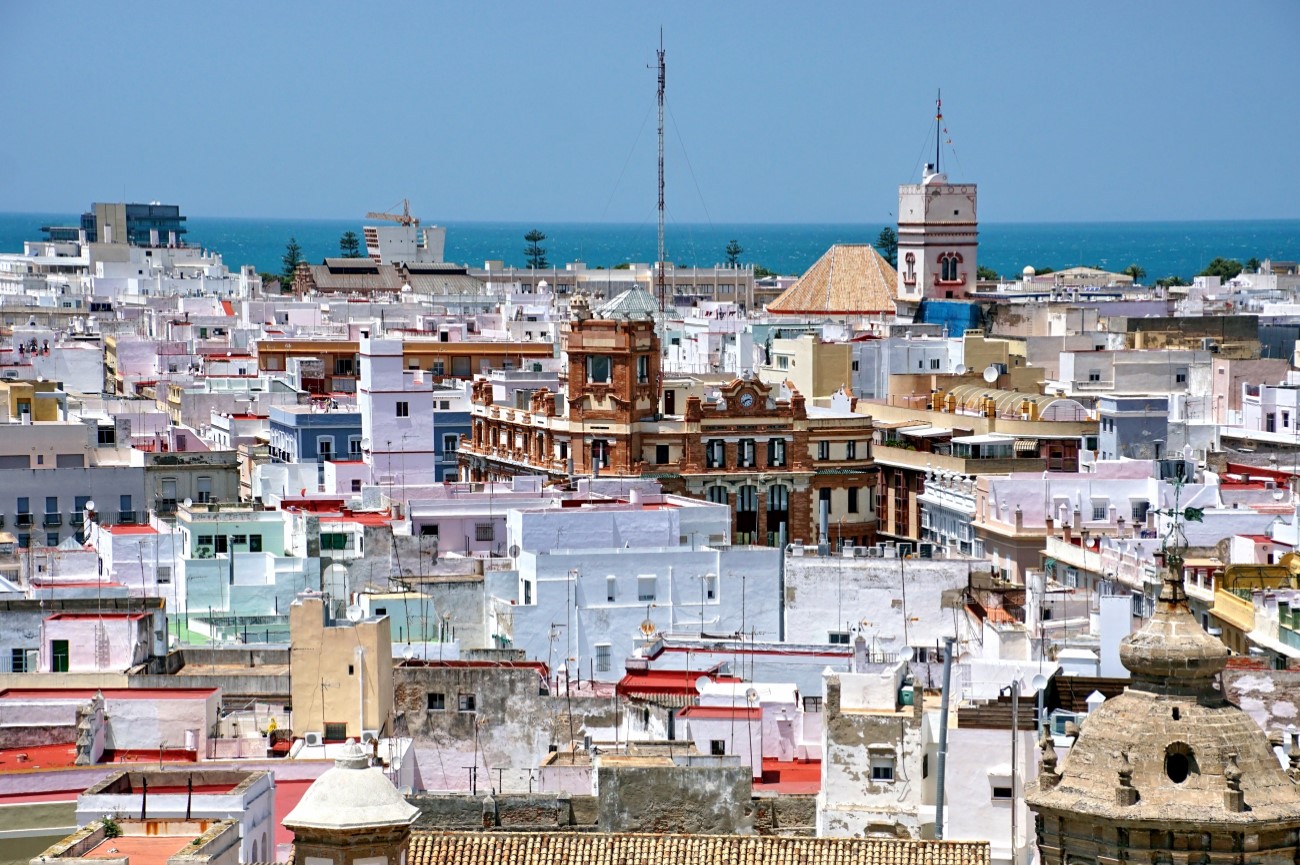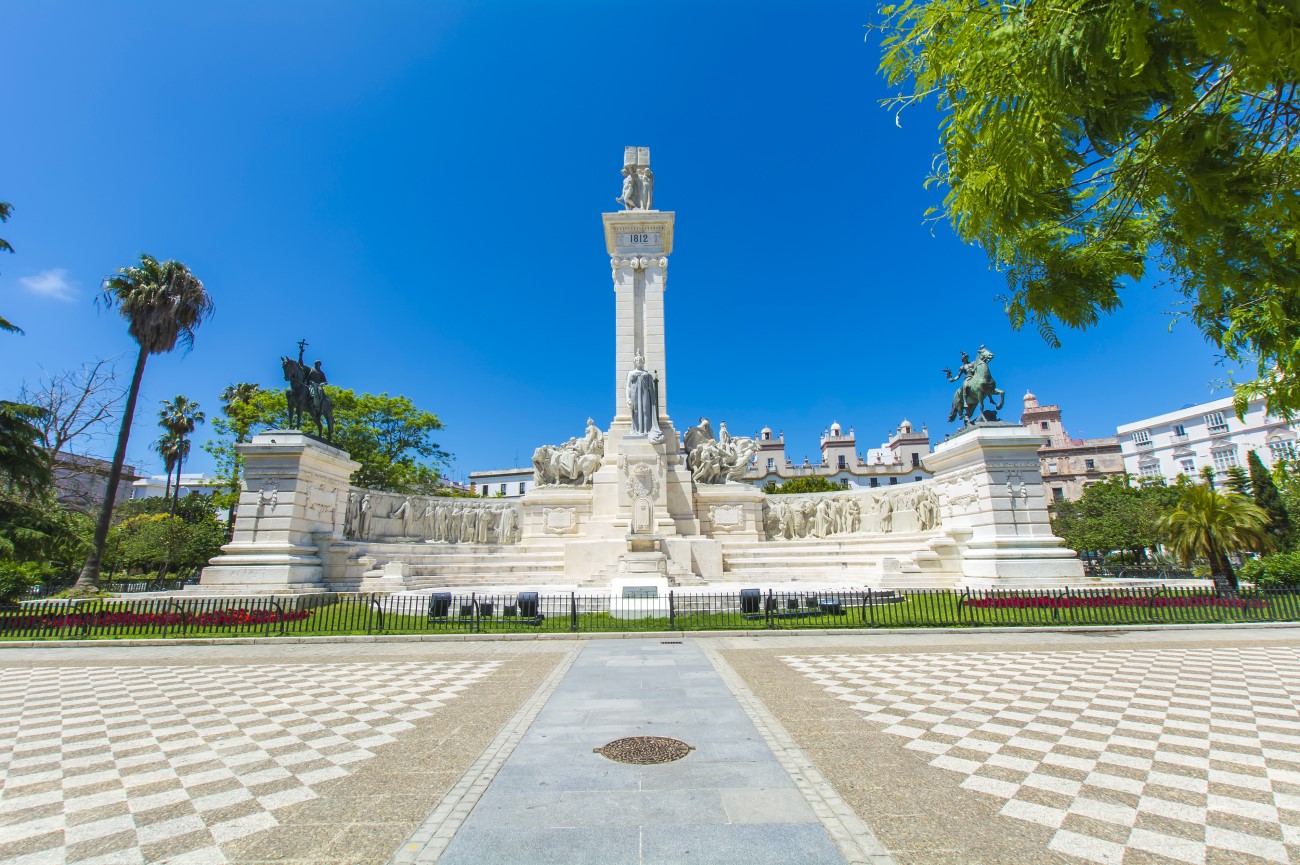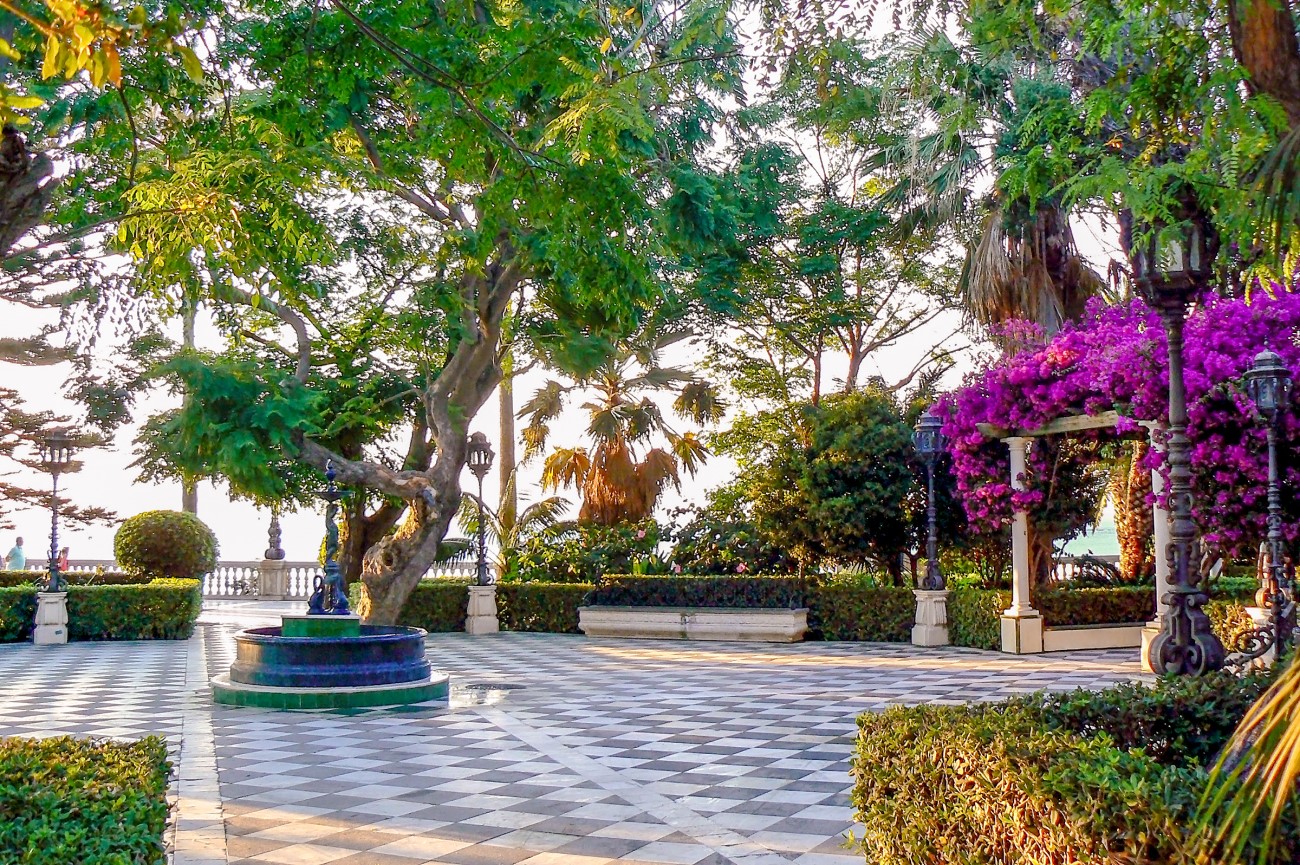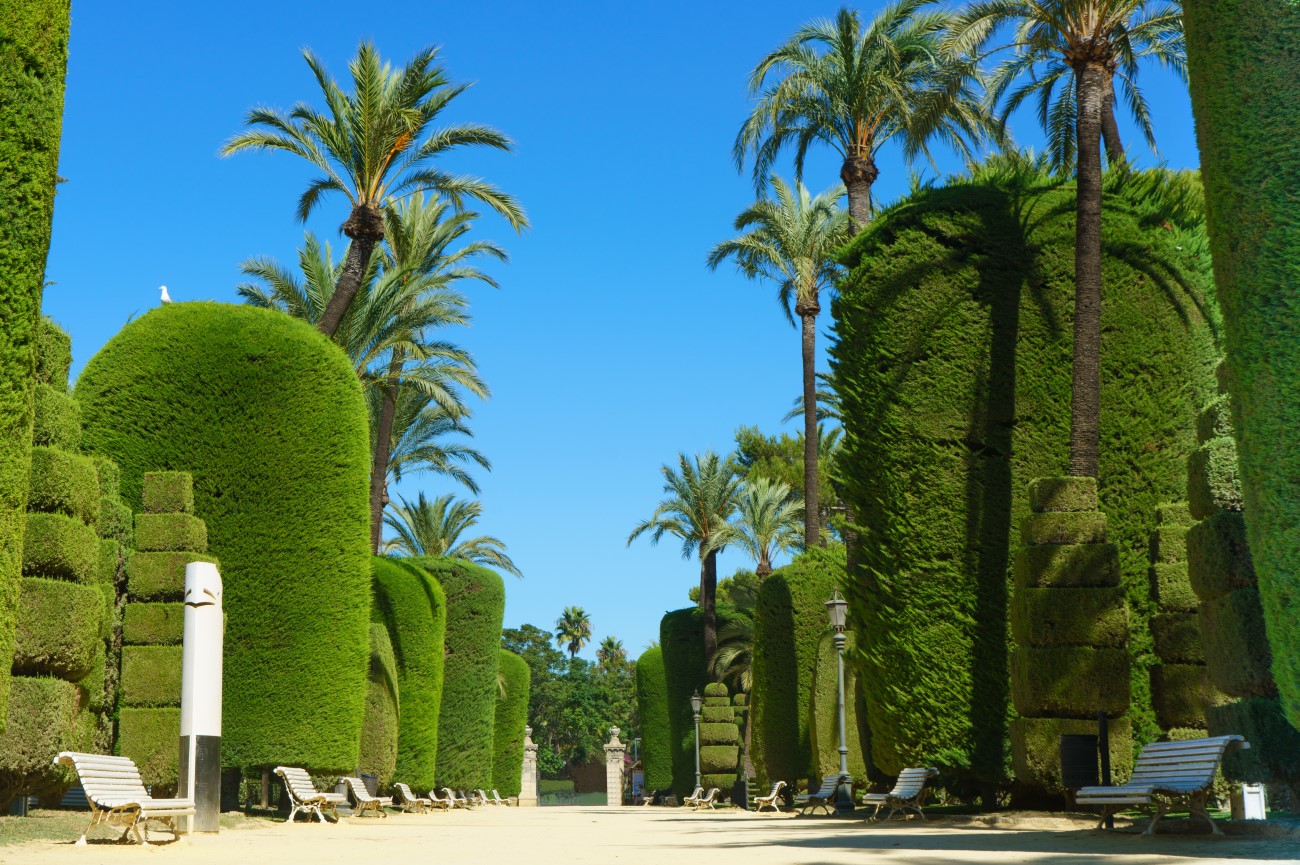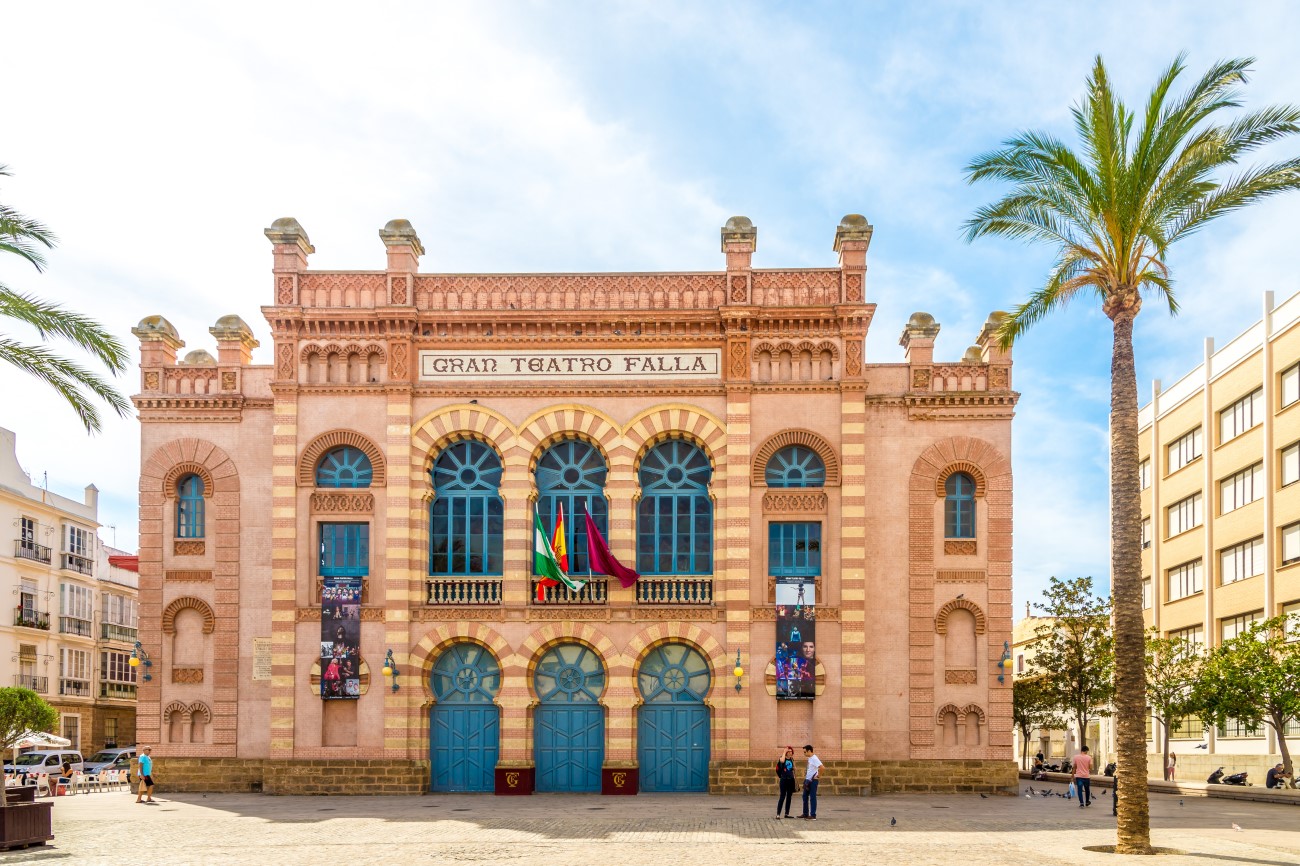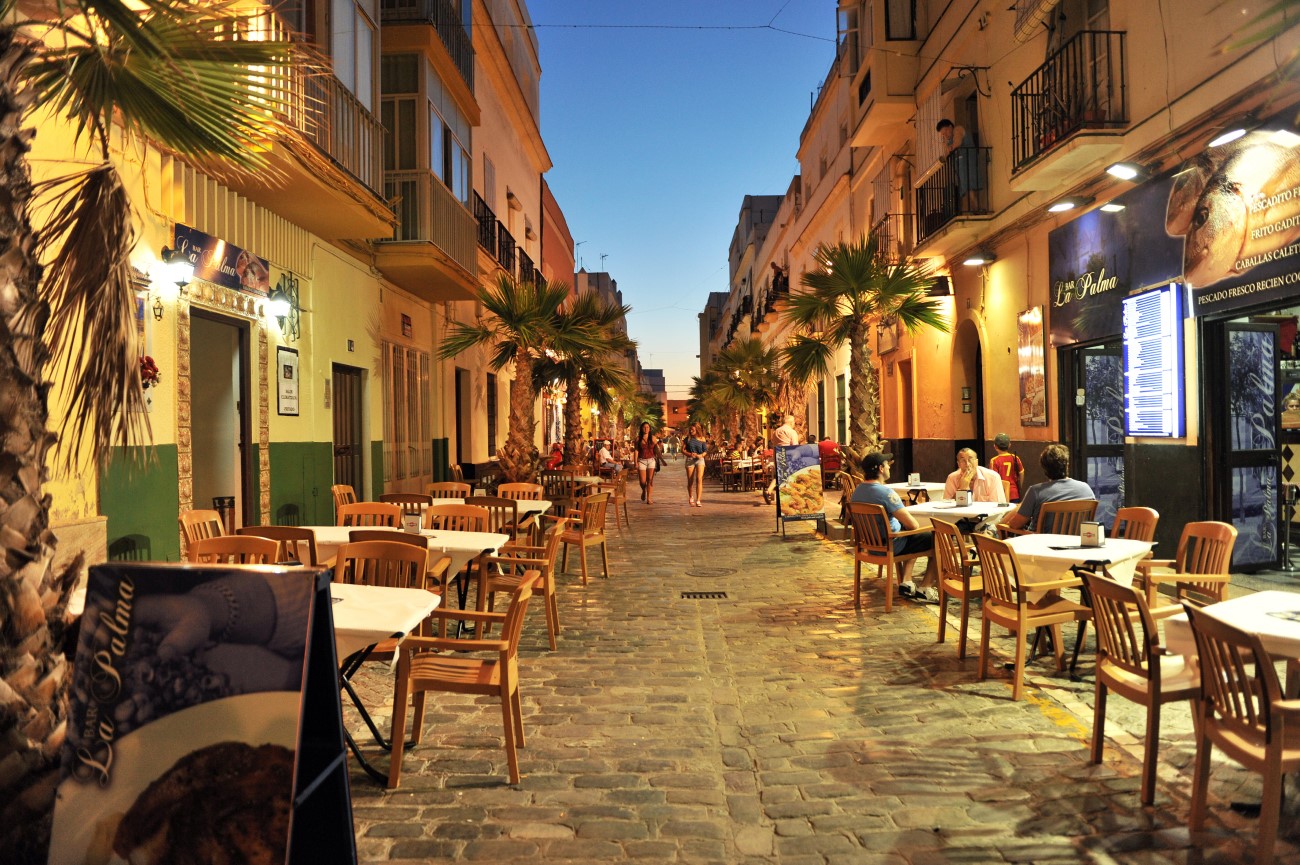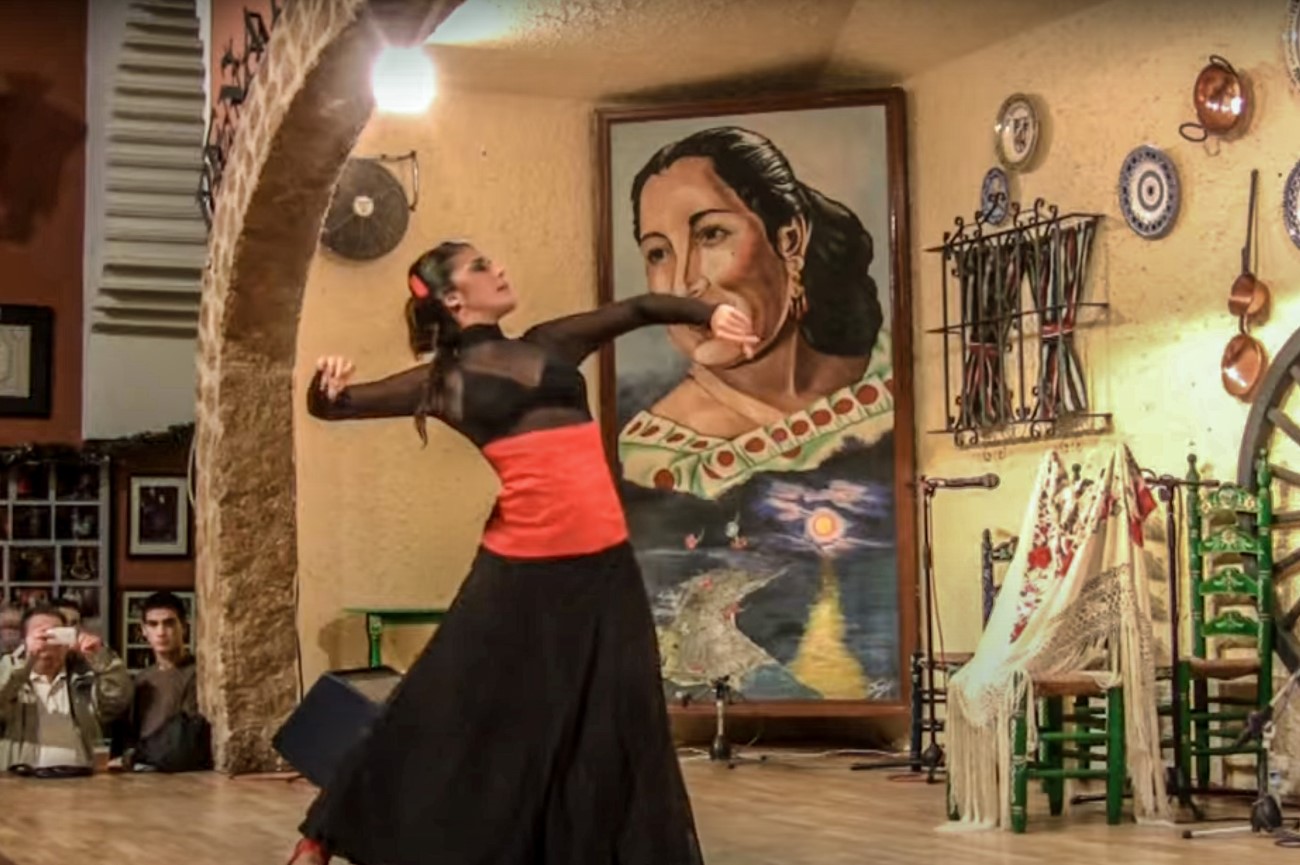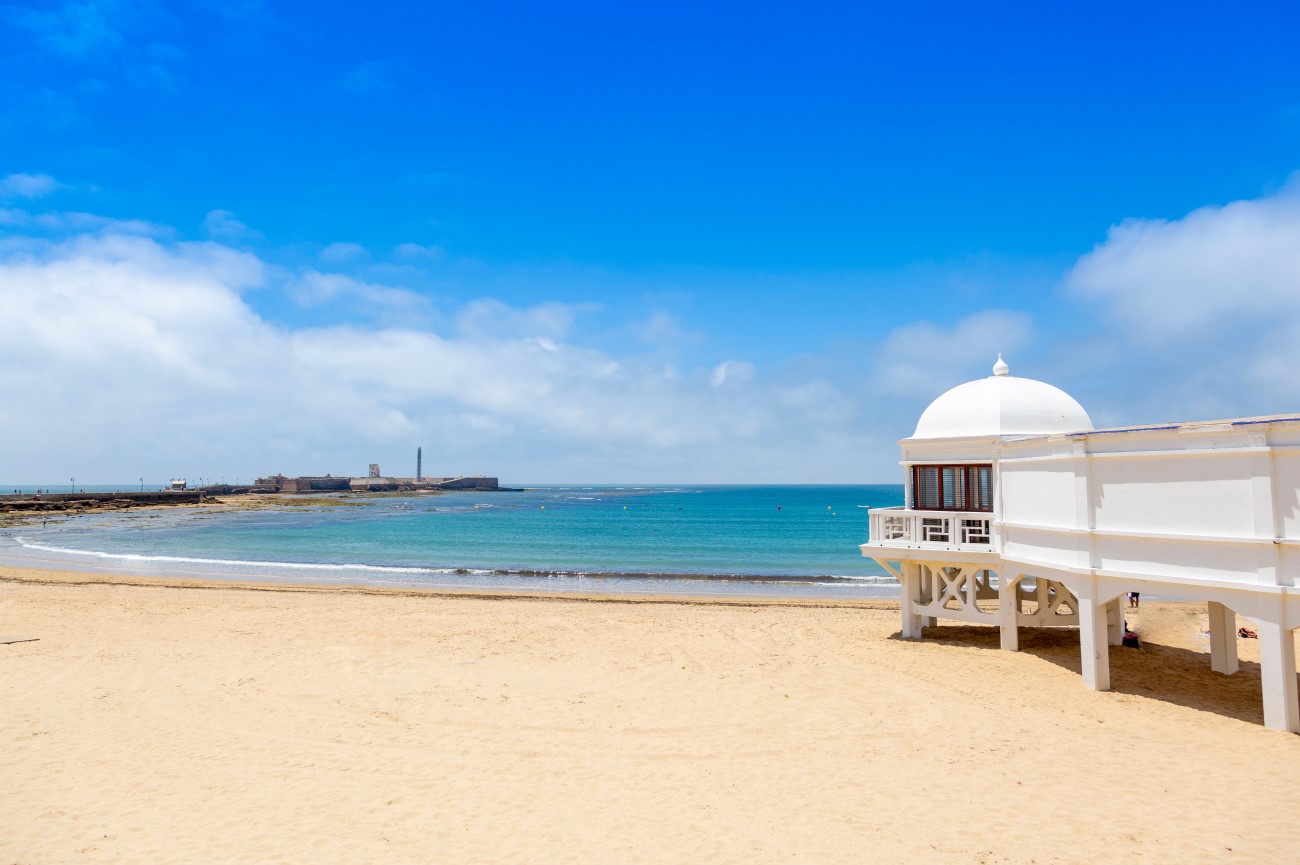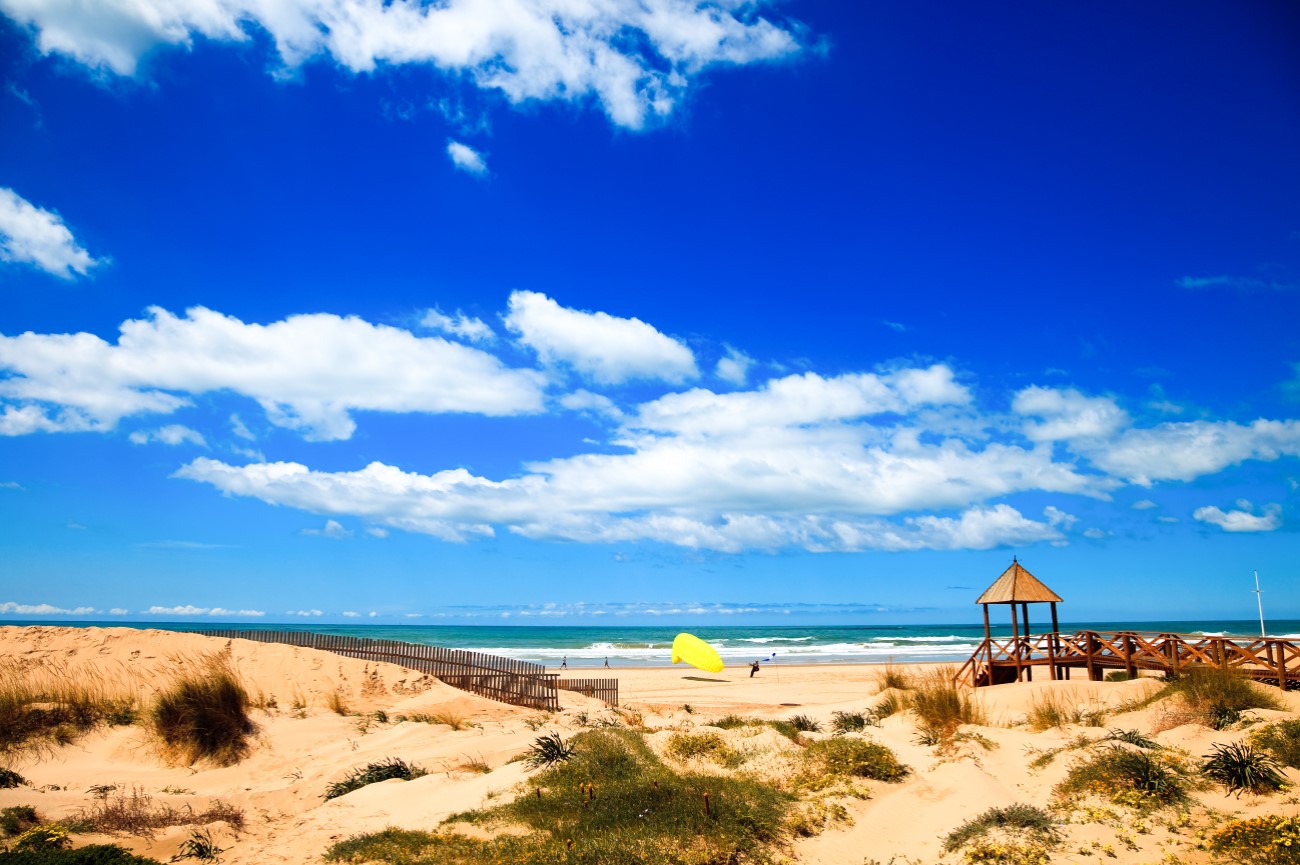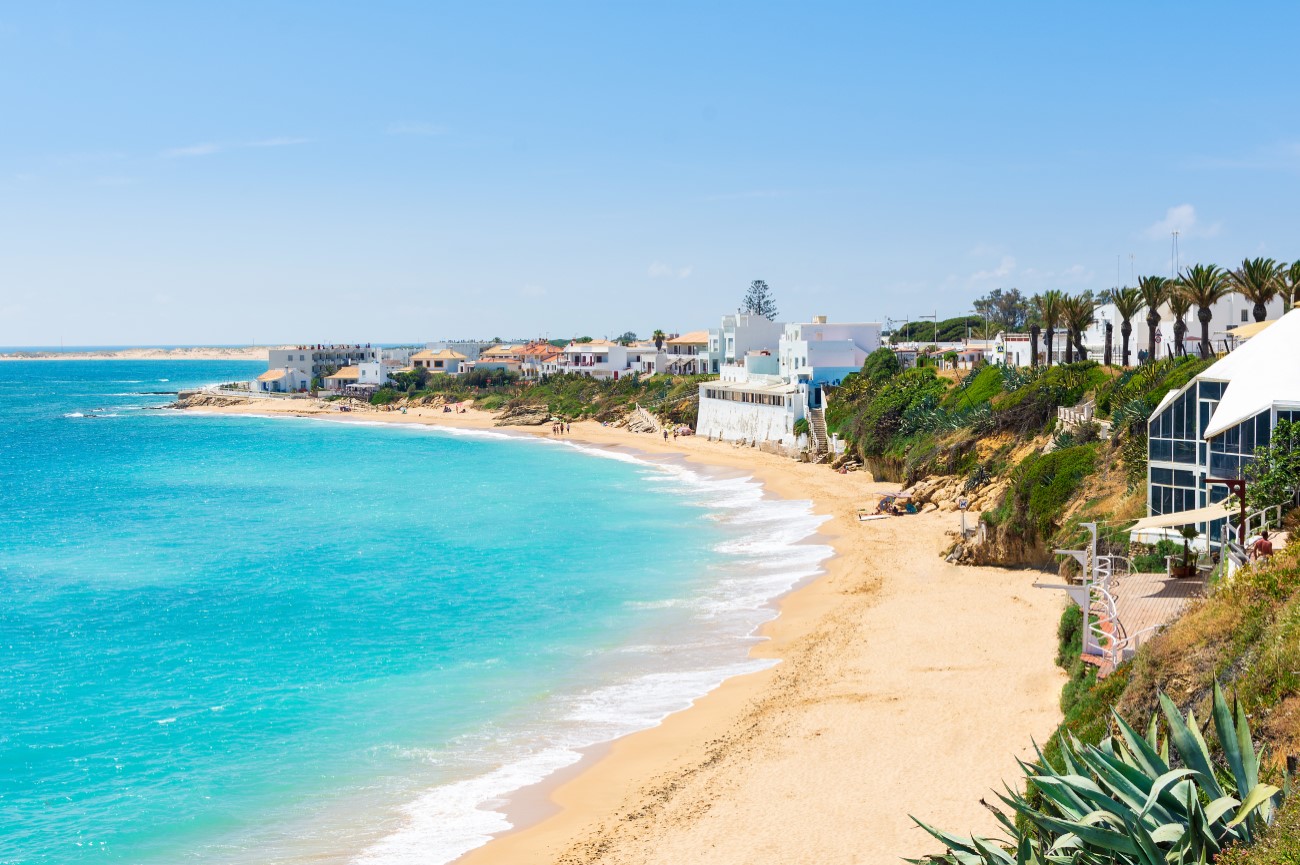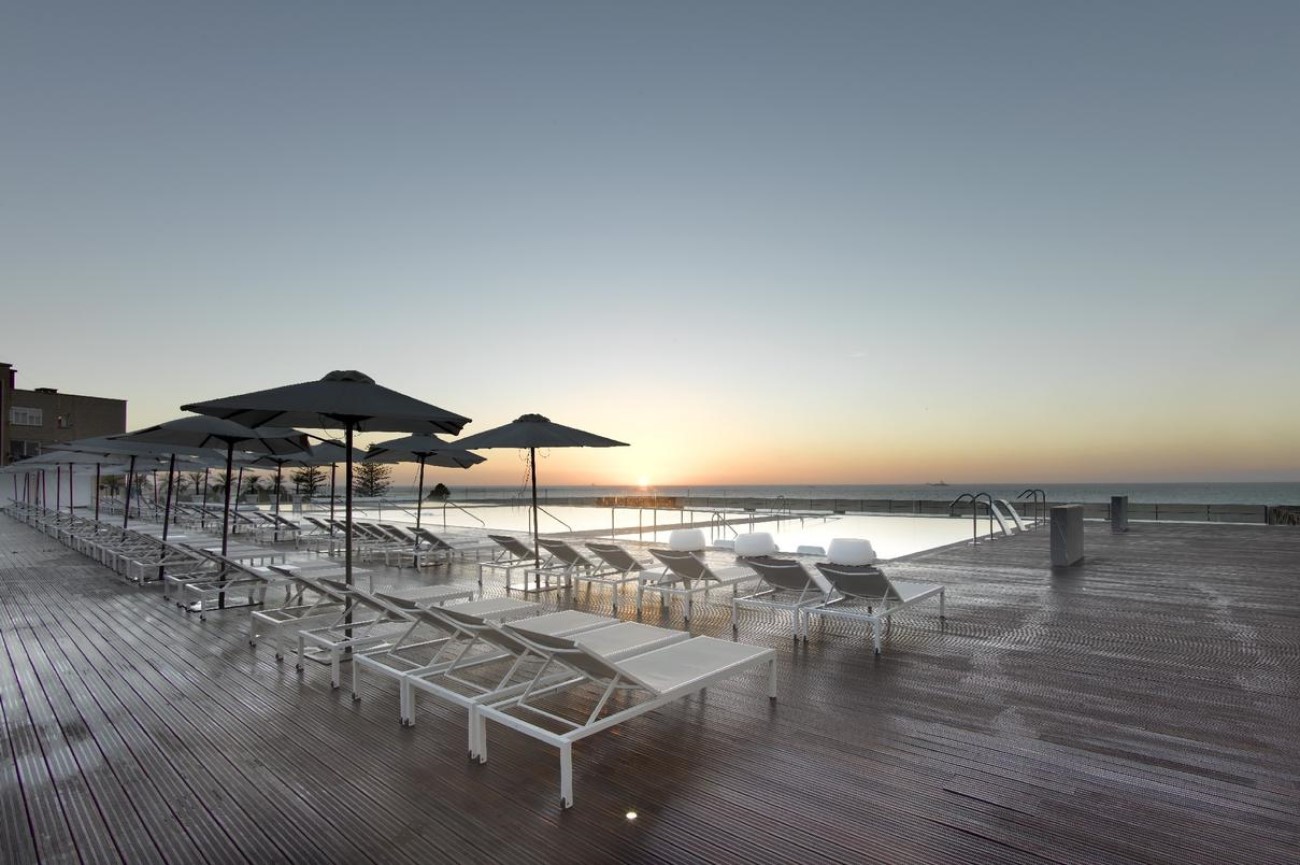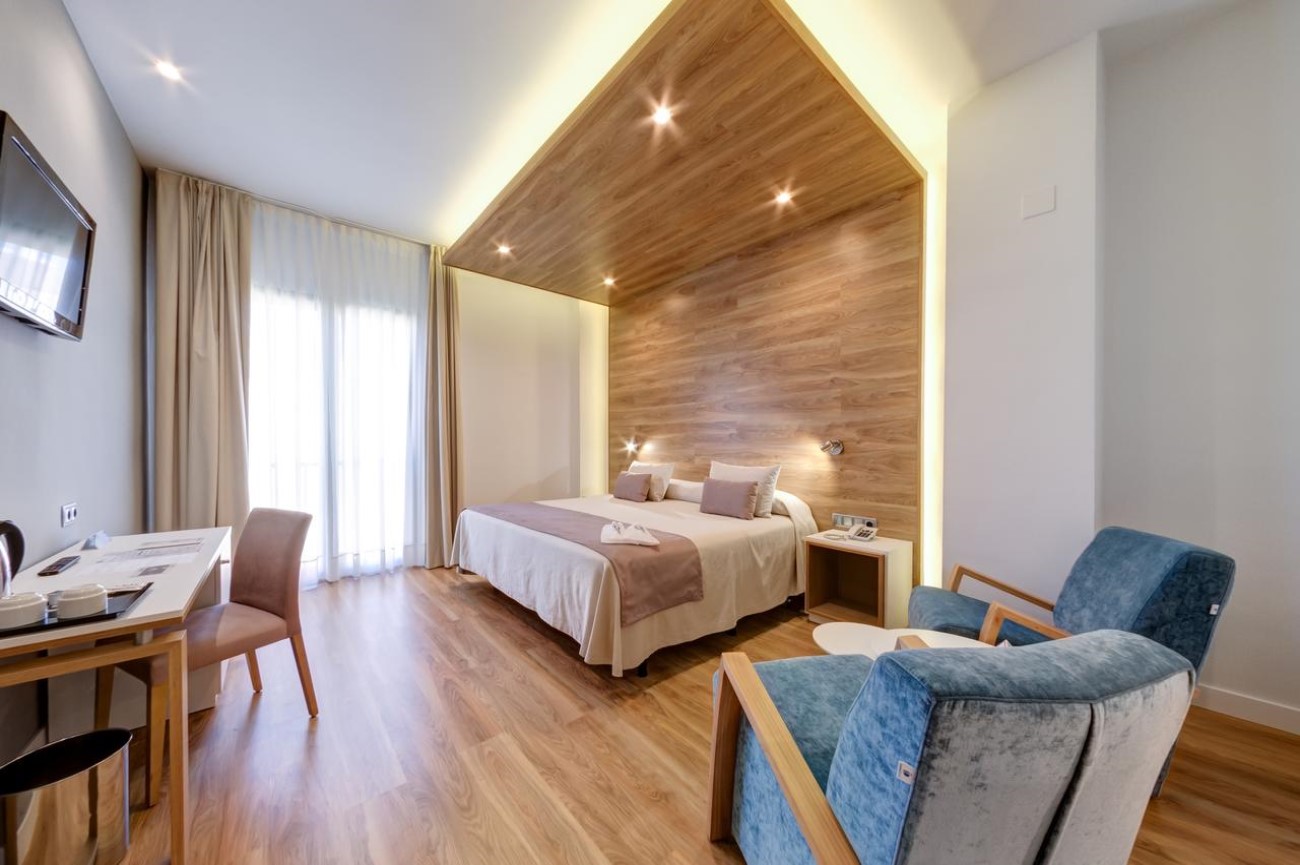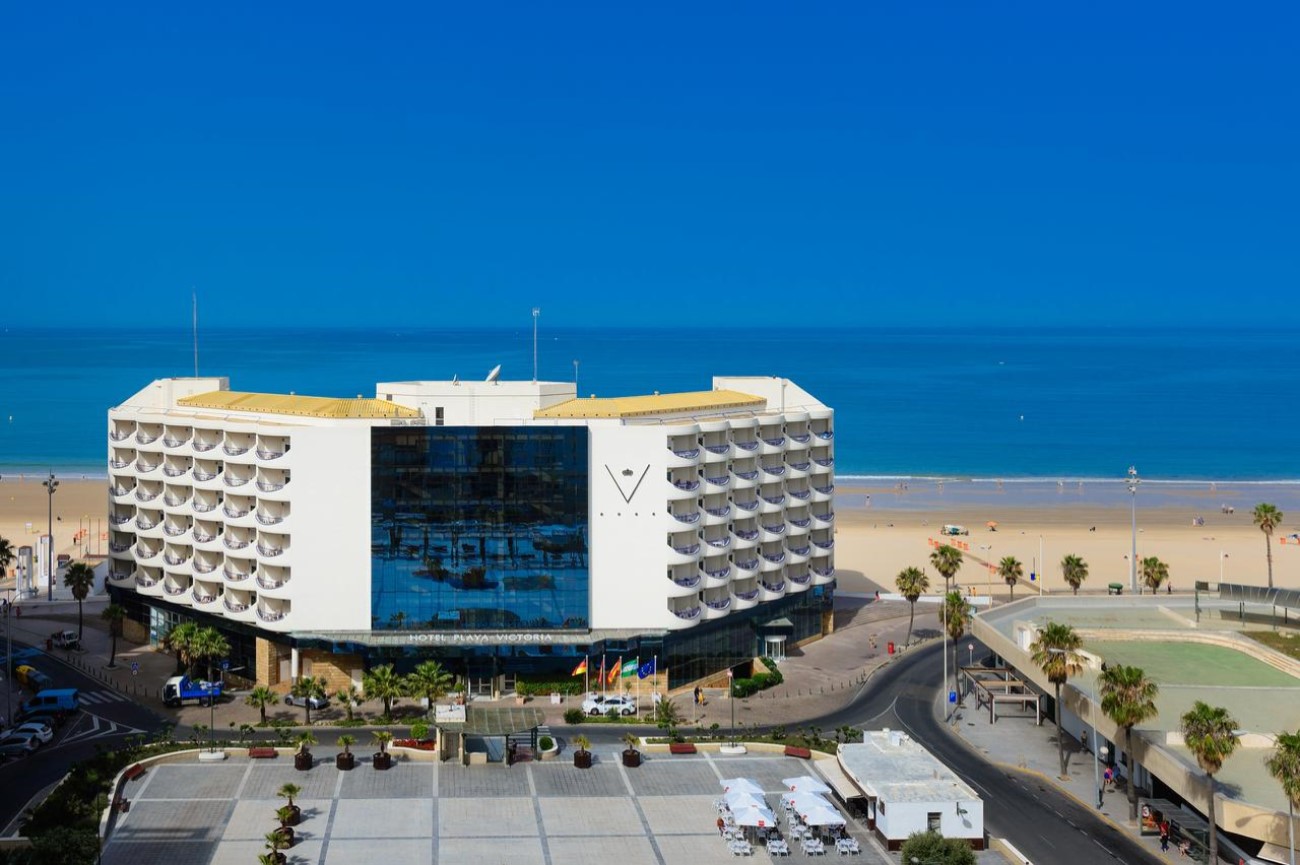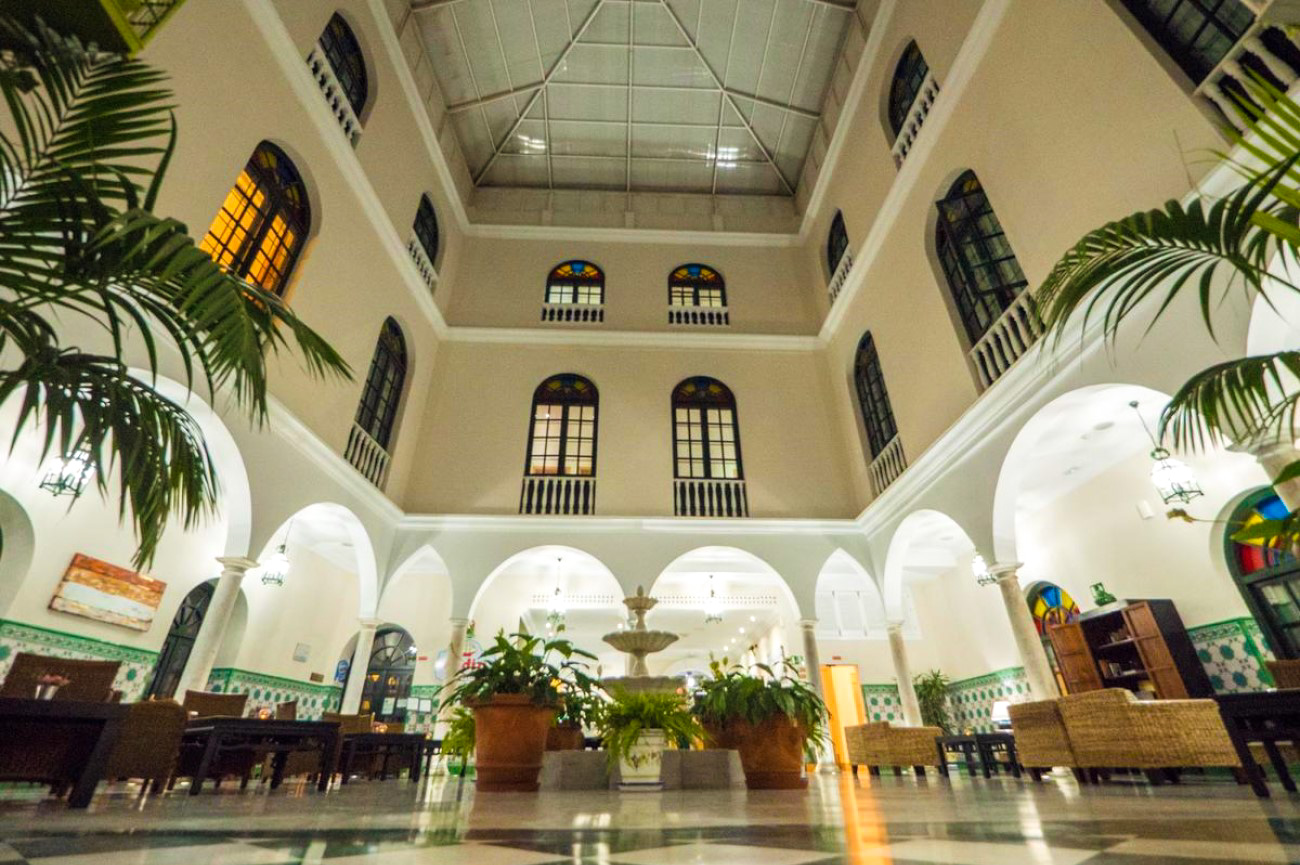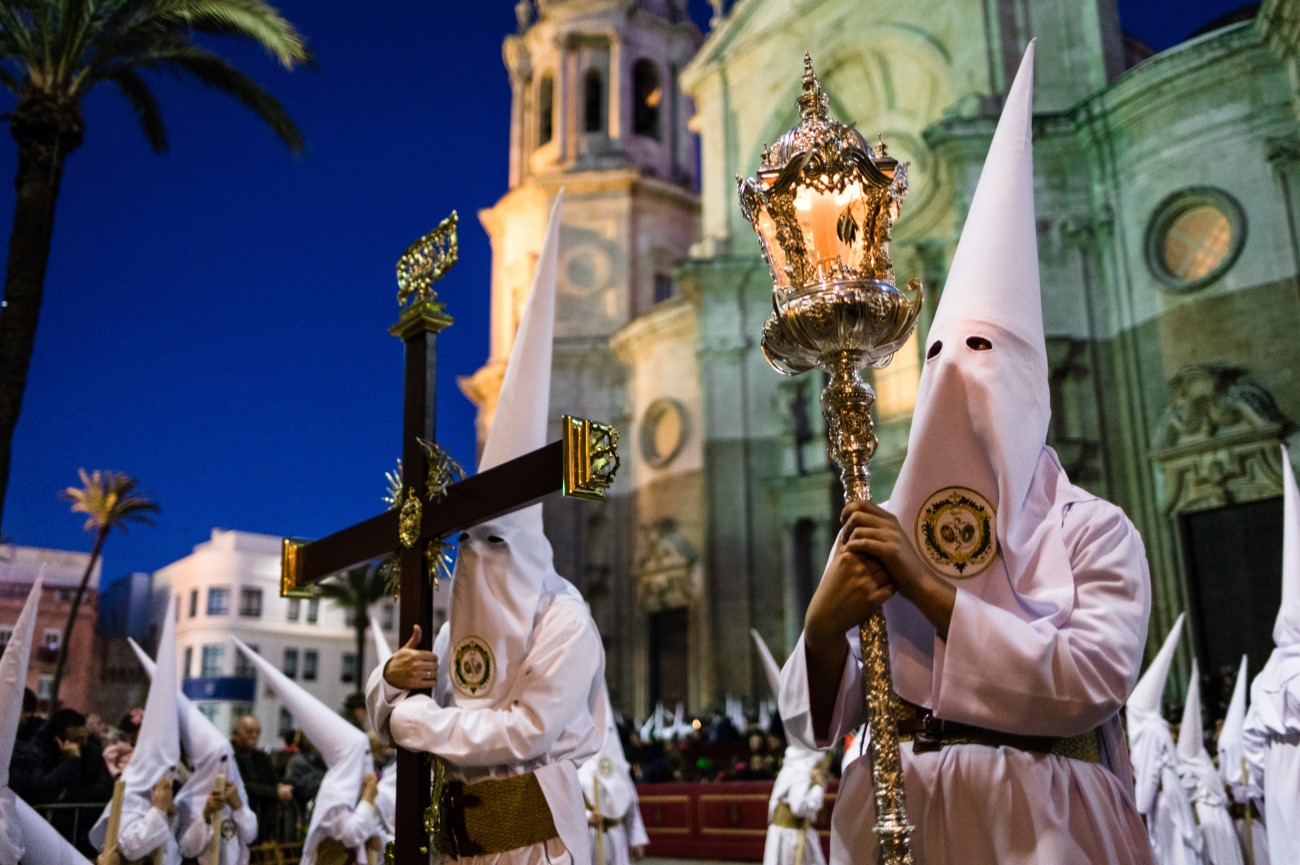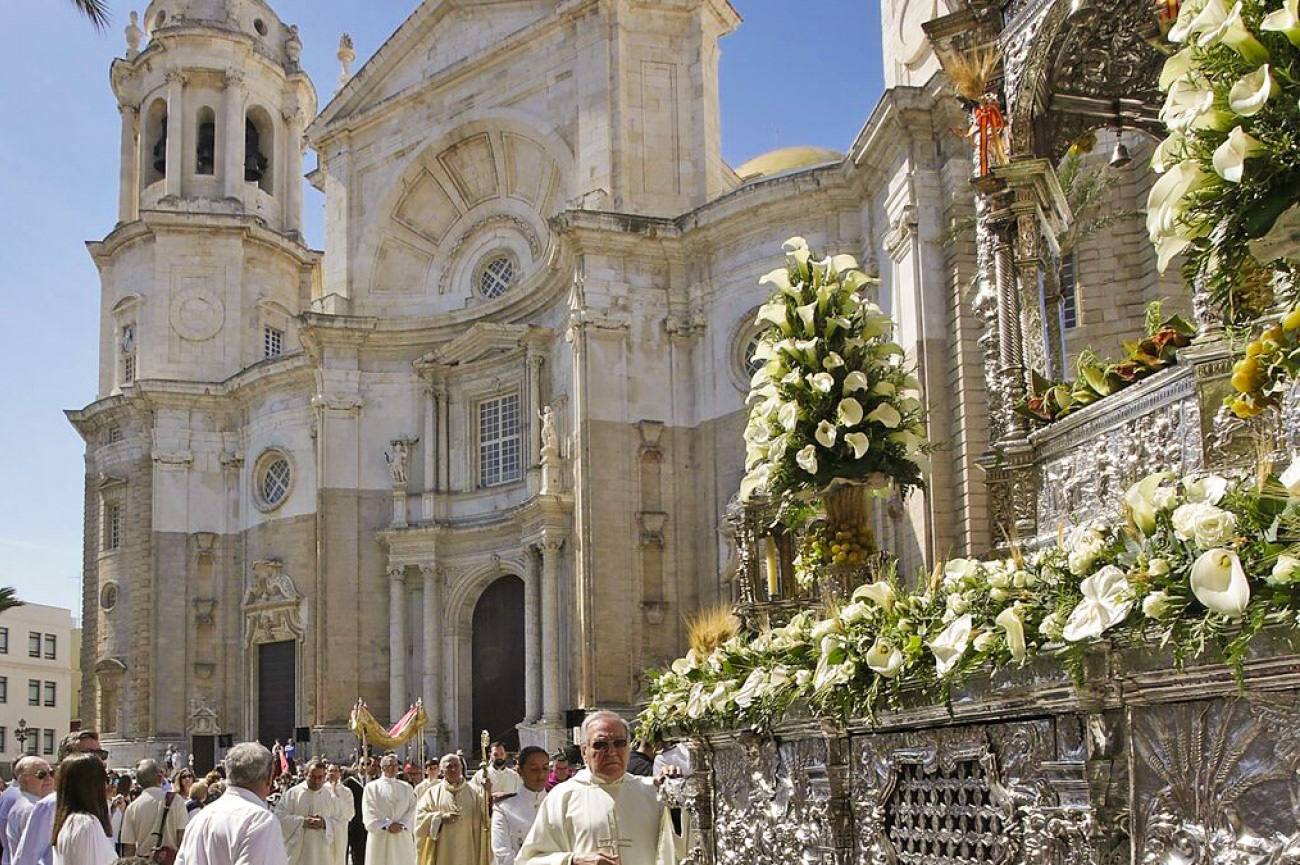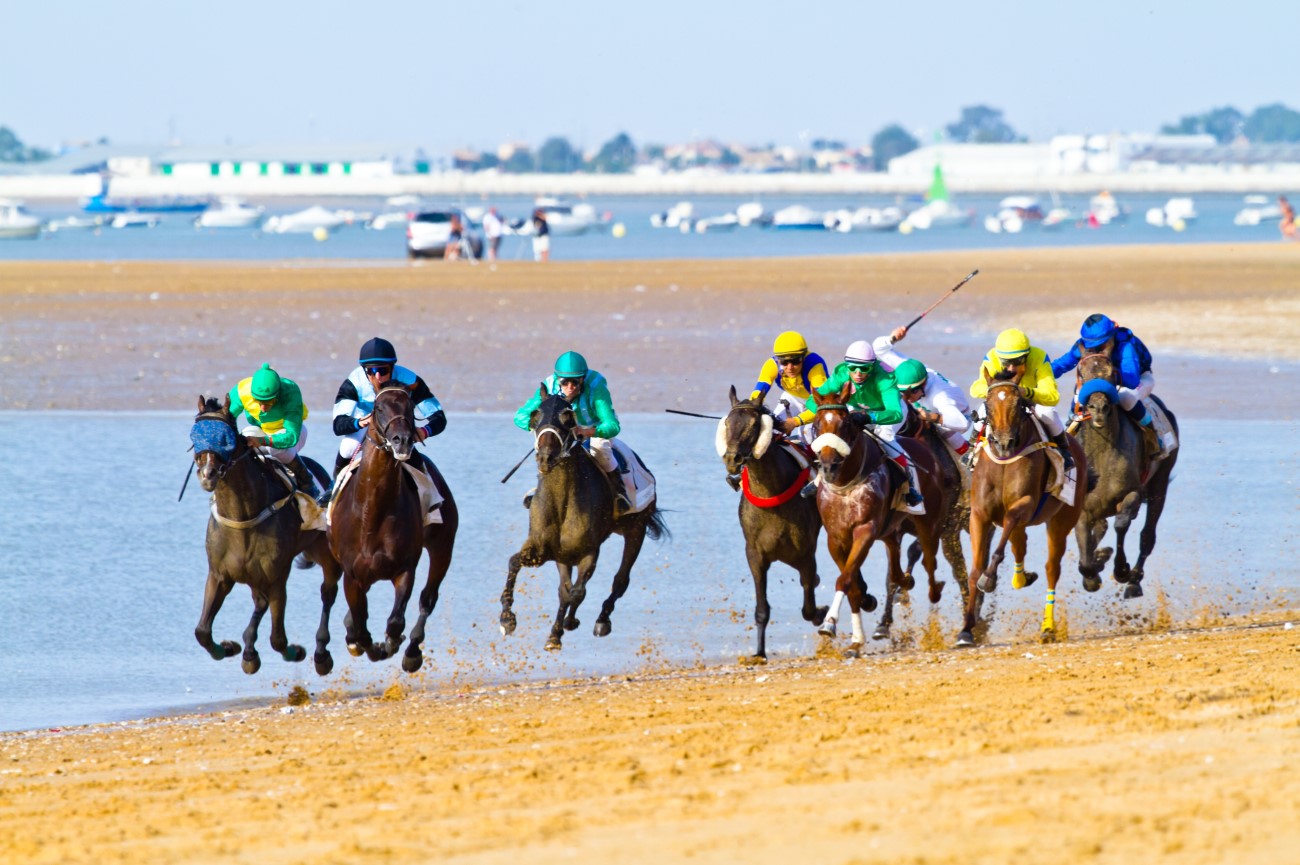Things to do in Cádiz, Spain
Cádiz is a charming port city located on the west coast of Andalucia. It's among the oldest cities in Europe, occupied for at least 3,000 years. The Phoenicians called it Gadir, and later the Moors renamed it to Qadis.
By the 16th century, the city had become the headquarters for the Spanish navy, who used it as a base for trading and explorations. It was from here that Christopher Colombus left on his journey to the New World.
Historical landmarks combined with delicious seafood and paradisiacal beaches is what attracts visitors to Cádiz today. The city gets especially lively during the Carnival celebrations, with its energetic flamenco performances.
Discover the best things to do in Cádiz
in our itinerary below. It includes the top attractions, as well as
tips on where to eat and where to stay.
Morning: Santa Catalina Castle
Begin your tour of Cádiz with a visit to the Castillo de Santa Catalina. Overlooking the sea, this fortress stands out with its star-shaped walls. It was built in 1596 to protect the city against invaders following the Anglo-Dutch war. These days, it acts more like a viewpoint, from which you can capture the beach of La Caleta. Inside the castle, there's also an exhibition area dedicated to Andalusian artists.
La Caleta Beach
Continue along the waterfront until you reach La Caleta Beach. James Bond fans might recognize this coastal stretch from the film "Die Another Day" when Halle Berry comes out of the water. La Caleta is the smallest beach in Cádiz, and it can get quite busy in the summer. Spend a couple of hours lounging here or, if you want more space, you can walk farther out to the beaches of Santa María del Mar or La Victoria.
San Sebastian Castle
From La Caleta, follow the Paseo Fernando Quiñones, a scenic footpath that leads onto the San Sebastian castle. This isolated fortress dates back to 1706, but the original construction comes from the Islamic era. For a while, it served as a prison, but now it's a UNESCO World Site. Take some time to enjoy the views over the waterfront before returning to the city centre.
Cádiz Cathedral
After visiting the castle, make your way to the Barrio del Pópulo. It's in this historic neighbourhood that you'll find the Cádiz cathedral. The building stands out from afar with its iconic golden dome rising above the city's skyline. Construction began in 1722, but it took another century to complete, resulting in a mix of architectural styles including Baroque and Neoclassical elements. Once you've seen the cathedral, make sure to check the Torre de Poniente, a bell tower which offers splendid views of the city. There's also a small museum on-site featuring religious artwork.
Roman Theatre
Just a few steps from the cathedral is an ancient Roman theatre. Established around the 1st century BC,it has a capacity for 20,000 people, making it one of the largest in Spain. It was uncovered in 1980, but some parts remain hidden under the city. Visitors can sit near the amphitheatre and see models of it in the exhibit area.
Puertas De Tierra
The Puertas de Tierra marks the division between the historic centre and the new town of Cádiz. This18th-century structure was initially designed by architect Torcuato Cayón as a defensive stronghold. These days, cars ride through its arches on the way to the beach of Santa María del Mar.
Plaza De San Juan De Dios
Plaza de San Juan de Dios is a lively square in Cádiz lined with palm trees and fountains. Its proximity to the port made it especially relevant during the 16th-century world trade. Today visitors can relax in one of the square's outdoor cafés and marvel at buildings like the town hall or the church of San Juan de Dios.
Cádiz Map of the morning tour
Afternoon: Cádiz Market
Most Spanish cities have a central food market, and Cádiz is no exception. Established in 1838 the Mercado de Abastos is one of the oldest covered markets in the country. Here you can experience local specialities mixed with international fare. After spending the morning wandering through the city, you'll probably be hungry, so we suggest stopping here for a bite to eat. Gadisushi is one of the most popular stalls. It's a sushi restaurant which makes nigiri and sashimi using fresh fish from the market itself. Keep in mind, there's no fish on Mondays. You can also take the opportunity to try some sherry wine at one of the tapas bars.
Torre Tavira
There are 129 towers scattered across Cádiz. In the 18th century, these lookouts were essential to monitor trading arrivals on the port. Since then, they've become a symbol of the city. Among these towers, the Torre de Tavira stands out as the highest one at 45 metres. From its terrace, you can admire the views over the castles and the Cádiz cathedral. Inside the tower, there's also a camera obscura projecting a panoramic view of the city.
Plaza De España
From the tower, take a walk towards the Plaza de España. At the centre of this square is the Monumento a las Cortes, a monument built to celebrate the 100th anniversary of Spain's liberal constitution, signed here in 1812. The statues that make up the monument all have different symbols, such as peace and war, and texts taken from the constitution decorate the walls.
Galeria Benot
Art lovers will enjoy a visit to the Galeria Benot, a small art gallery near the Plaza de España. The space hosts exhibitions on contemporary Andalusian artists, which are always changing. If you have some spare time in the city, have a look inside. Otherwise, you can head straight to the Museum of Cádiz.
Museum Of Cádiz
If you want to learn more about the city's history, you should go to the Museo de Cádiz. Inside this museum, you'll find items from the Phoenician and Roman times, as well as recent paintings and statues spread across three floors. On the ground floor is the archaeological collection with objects from a Phoenician necropolis site. The collection's highlight is a marble sarcophagus dating back to the 5th century BC. There are also several Greek, Arab and Roman artefacts to admire. The fine art's section occupies the first floor with paintings by Zurbarán, Rubens and Murillo. Finally, on the top floor is a room dedicated to traditional puppets used in the city's folk celebrations.
Alameda Apodaca Park
After the museum, take a walk through the Alameda de Apodaca park. Follow the road towards the sea, and you'll soon end up there. It's hard not to fall in love with this green oasis lined with palm trees and colourful tiled benches. The terrace overlooking the water is the ideal place to watch the sunset in Cádiz.
Parque Genovés
Near the Alameda Apodaca is another city park worth visiting: Parque Genovés. It's famous for its stunning manicured gardens, sandy paths and a cave with a waterfall and a footbridge. Surrounding this water feature are a couple of dinosaur sculptures which kids will love. The park is full of plants from around the world including maple trees, Canarian pine and poplars. There's also a viewpoint on-site which overlooks the sea. Once you finish exploring the area, you can grab a drink at the park's café.
Gran Teatro Falla
Established in the 19th century, the Gran Teatro Falla hosts some of the city's most iconic events. It gets its name from the Andalusian composer and Cádiz local, Manuel de Falla. If you're visiting during February or March, you might catch the carnival competitions here. For the rest of the year, there are other events, including theatre plays and concerts, so it's worth checking the schedule before you go. Even if you can't make it to an event, it's worth stopping by to admire the building's stunning Moorish-style facade.
La Viña Neighbourhood
After seeing the theatre, head over to La Viña. The city's old fisherman neighbourhood is now home to a series of bars and restaurants where you can sample fresh seafood. It's busy throughout the day, but it comes alive at night with some places hosting flamenco shows. Get lost in its narrow streets and then grab a meal at the Casa Manteca, one of the oldest tapas bars in the city.
Cádiz Map of the Afternoon tour
Top Things To Do With Kids In Cádiz
The region of Cádiz has plenty of family-friendly attractions. Playing by the beach and climbing up the Torre de Tavira will probably be the highlights of our city itinerary, but there are many other places and activities for kids.
You can explore the sarcophagus section at the Museo de Cádiz or take them to the puppet museum near the Puertas de Tierra, which features puppets from all over the globe.
From the Bay of Cádiz, you can hop on a catamaran trip around the region, or drive down to the city of Tarifa and join a dolphin and whale watching tour there. Further down the coast is the Bahía Park, a fun water park located in Algeciras close to Gibraltar.
Another idea is to travel up to the National Park of Doñana, a large nature reserve where you can spot lynxes and other wild animals.
Best Activities In Cádiz
- Flamenco show: Visitors spending the night in Cádiz can book a flamenco performance. The cultural centre La Perla usually hosts shows two or three times a week which can have up to six performers on stage. The local tavern La Cava usually welcomes artists on Tuesday, Thursday and Saturday.
- Hiking: If you're spending a couple of days in Cádiz, you should take time to explore some of the region's natural parks. There are three large parks nearby: Doñana, Sierra de Grazalema and Los Alcornocales. The Doñana National Park is home to a variety of wild species like the Iberian lynx, the Sierra de Grazalema wows visitors with its gorges and water features, and Los Alcornocalesis famous for having one of the largest cork forests in the world.
- Surfing: Stretching from Cádiz to Tarifa is a series of beaches which are ideal for surfing. Some of the best spots include El Palmar, Los Caños de Meca and Playa de los Lances. Even if you're just starting out, there are many surf schools in the area where you can book a class. More advanced surfers can rent equipment here too.
- Horse riding on the beach: Near the city of Tarifa you'll find many companies offering horse riding experiences by the beach. You can gallop along the dunes and hear the waves splashing while looking at the African coast in the distance.
Best Cádiz Beaches
Part of the Costa de la Luz, the beaches in Cádiz are among the best in Spain. When the summer comes, Andalusians escape to this coastal stretch to cool off.
Close to the historic centre is Playa de La Caleta, sandwiched between the Castillo de Santa Catalina and the Castillo de San Sebastian. The two castles help shelter the beach from strong waves, making it ideal for families. It's popular among residents and local fishermen who rest their boats here.
In the new city, you'll find Playa Santa María del Mar, a small beach overlooking the city's cathedral and just next to it is the Playa La Victoria. This last one has a series of beach bars which get quite lively in the summer, especially during happy hour.
Further south are three more beaches: Playa de la Cortadura, Playa El Chato and Playa De Torregorda. These are a bit wider, giving you plenty of space to stretch in the sand.
If you're considering Cádiz as a province then you can include other beaches in your itinerary such as Playa de los Caños de Meca, Zahara de los Atunes, Playa Bolonia and Valdevaqueros.
Where To Eat In Cádiz
With the sea so close to the city, it's no surprise that Cádiz cuisine features so many seafood delicacies. Some local dishes worth trying include the pescaito frito (deep-fried fish), the tortillitas de camarones (shrimp fritters) and the cazón en adobo (dogfish coated in breadcrumbs and cumin). All of these taste even better when paired with a glass of cold sherry.
Whether you're looking for a tapas session or a full dinner, here are some of the best cafés and restaurants in Cádiz:
- Casa Hidalgo: For breakfast or an afternoon snack head to Hidalgo. Set near the cathedral this pastry shop serves delicious homemade empanadas and doughnuts.
- Mercado de Abastos: Beyond the fresh produce section, the city’s central market has a food courtyard where you can order tapas and other international delicacies, accompanied by a glass of sherry wine. We recommend trying the Gadisushi stall, which serves delicious sushi with fish sourced straight from the market.
- La Candela Tapas Bar: This small tapas bar draws visitors with its quirky design featuring colourful chairs and place mats made of tiles. The menu includes innovative tapas inspired by the local cuisine, like the strawberry salmorejo (similar to gazpacho). The place is small, so make sure to reserve ahead to guarantee a seat.
- Taberna la Manzanilla: Open since the 1930s, this family-run tavern is the ideal place for a quick drink before lunch. The house speciality is the manzanilla sherry, poured straight from an oak barrel.
- Casa Manteca: Bullfighting and flamenco posters decorate this traditional tavern in the city's old fishing quarter. Casa Manteca has become one of the most famous tapas bars in Cádiz. Here you can enjoy a glass of sherry with tasty tapas like the chicharrones de Cadiz (pork belly cooked in lard) as well as a variety of cured meats.
- Freiduria las Flores I: Cádiz has many fried fish restaurants, but this is probably the most popular one. Some dishes worth trying here include the cazón en adobo and the chopitos (tiny fried cuttlefish). You can also order a surtido, which combines different kinds of fish and seafood in one dish.
- La Tabernita: This bar is only two minutes away from La Caleta Beach. Grab a seat outside and try out a variety of tapas. Make sure to arrive early, as it gets quite busy.
Where To Stay In Cádiz, Spain
If you’re planning to spend the night in the city, here are some of the best hotels in Cádiz:
- Parador de Cádiz (4 stars): You'll find this modern hotel right next to the Parque Genovés. Its best feature is the outdoor swimming pool overlooking the sea. Other facilities include a restaurant, a gym and a spa with a sauna and an indoor pool.
- Hotel Monte Puertatierra (4 stars): Monte Puertatierra is the ideal choice for those who want to enjoy the beach but still be near the historic centre. The hotel is three minutes away from the Santa María del Mar beach and 20 minutes from the cathedral. There is a gym and a café on-site and, for an extra fee, guests can use their parking lot.
- Hotel Playa Victoria (4 stars): This hotel sits in the middle of the beach of La Victoria. The building stands out with its ship-like structure with blue balconies contrasting against its whitewalls. Guests can access the beach straight from here or enjoy a swim in the hotel's outdoor pool. It's a bit further from the city centre, but some buses will take you there.
- Hotel Spa Cádiz (4 stars): Also facing Playa La Victoria is the Hotel Spa Cádiz. Upon booking, guests can choose between rooms and apartments equipped with kitchens. Some rooms also come with balconies and sea views. In the premises, there's a café-bar and a spa with a thermal water circuit.
Best Time To Visit Cádiz
The best time to visit Cádiz is around May or September. During these months the weather is pretty mild, and there are fewer crowds on the beach, compared to the peak summer season. If you decide to come in July or August, be prepared for the hot temperatures. Another alternative is to visit between February and March to catch the local carnival celebrations. This season can be a bit pricey in terms of accommodation, but it's worth it for the experience. If you don't mind a bit of rain, you can also schedule your trip for October or November.
Cádiz Festivals
- Carnival: If you can only go to one event in Cádiz, make it Carnival. Inspired by the Venice festivities, the Gaditanos created their version of carnival, which is now one of the most popular parties in Andalucia. It starts on Shrove Tuesday (around February or March) and lasts for about a week. The city transforms into a large open theatre with flamenco performances, colourful parades and firework displays. So grab a costume and get ready to party all night long.
- Holy Week: The Semana Santa or Holy Week is an annual celebration that takes place around Easter. During this holiday there are a series of parades led by the local brotherhoods. They wear masks and tunics and carry floats with saint statues across the city, usually starting at the cathedral.
Corpus Christi: Following the Holy Week is the Corpus Christi, another religious event which celebrates the Eucharist. It's usually held in May or June, on the first Thursday after Trinity Sunday. The highlight is the procession of the Holy Host.
- Carreras del Caballos: Close to Cádiz is the town of Sanlúcar de Barrameda. Every year around August they host an exciting horse racing event on the beach. Dating back to 1845, it's among Europe's oldest equestrian competitions. Access is free, and you can place bets if you want.
- All Saint’s Day: On the 1st of November Cádiz celebrates Todos Los Santos. As in most countries, this holiday has people visiting cemeteries and leaving flowers on their relatives’ graves, but in Cádiz, there's also a connection with food. Some traditional sweets served during this day include the Panellets, the Buñuelos de Viento and the Huesos de Santo.
How To Get From Seville To Cádiz
- By car: It takes about 1h30 to get from Seville to Cádiz by car, which is 100km away. You need to get on the AP-4 road and then follow the signs to Cádiz. Here is a map with the driving directions.
- By train: The easiest way to reach Cádiz without a car is to get the train. You can catch it at the San Bernardo station near Plaza de España. The journey takes around 1h45. Tickets cost on average €20 each way, but they can cost less if you purchase them in advance. You can buy tickets directly at the station or online at the Renfe website.
- By bus: There’s also a bus connection between Seville and Cádiz run by Transportes Comes.The journey takes about the same time as the train and ticket price is also similar. You can catch the bus at the Prado de San Sebastián station.


